The best and worst NFL QBs at everything
Scott Kacsmar
ESPN INSIDER
Football is the ultimate team sport, and while the quarterback is the most important player, he still has only limited control of what his team does each game.
We wanted a way to isolate a quarterback's value when he threw or ran the ball relative to what the rest of his team did on every other play. The method for this was to collect data on expected points added (EPA) from ESPN Stats & Information research. Every play has an expected point total based on factors such as down, distance to go, field position, home-field advantage and time remaining. The higher the EPA, the more successful that play was at helping the team score the game's next points.
Basically, if a quarterback had a great season despite not getting much help from his running game or defense, then he'll have a much higher EPA relative to his team's EPA, showing his value, and suggesting that he needs more help around him. Even if the quarterback had an average individual season, a terrible team EPA will prove that he's likely far less of the problem than the rest of the team's flaws.
The following is a look at which 10 quarterbacks were the most valuable relative to their team's performance in 2017. Each quarterback's total EPA (on his passes and runs) was compared to the sum of his offense's EPA on plays not involving him (essentially the running game) and EPA from the defense, special teams and penalties. Things like pass blocking and yards after the catch were not accounted for in the QB's EPA total. Only games where that quarterback played were included in the data.
We want to stress that this is not a traditional value analysis such as what one would look at to decide the league MVP (won by Tom Brady last year). In that case, Brady finished first in EPA by a quarterback (120.4), but because the Patriots were so strong in certain areas (rushing, special teams and penalties), the team EPA was 62.8 (ranked sixth). Thus, Brady produced 57.6 more EPA than his team, which ranked 11th in 2017.
Read through our various categories of passers, or skip ahead to the metric of your choice here:
We wanted a way to isolate a quarterback's value when he threw or ran the ball relative to what the rest of his team did on every other play. The method for this was to collect data on expected points added (EPA) from ESPN Stats & Information research. Every play has an expected point total based on factors such as down, distance to go, field position, home-field advantage and time remaining. The higher the EPA, the more successful that play was at helping the team score the game's next points.
Basically, if a quarterback had a great season despite not getting much help from his running game or defense, then he'll have a much higher EPA relative to his team's EPA, showing his value, and suggesting that he needs more help around him. Even if the quarterback had an average individual season, a terrible team EPA will prove that he's likely far less of the problem than the rest of the team's flaws.
The following is a look at which 10 quarterbacks were the most valuable relative to their team's performance in 2017. Each quarterback's total EPA (on his passes and runs) was compared to the sum of his offense's EPA on plays not involving him (essentially the running game) and EPA from the defense, special teams and penalties. Things like pass blocking and yards after the catch were not accounted for in the QB's EPA total. Only games where that quarterback played were included in the data.
We want to stress that this is not a traditional value analysis such as what one would look at to decide the league MVP (won by Tom Brady last year). In that case, Brady finished first in EPA by a quarterback (120.4), but because the Patriots were so strong in certain areas (rushing, special teams and penalties), the team EPA was 62.8 (ranked sixth). Thus, Brady produced 57.6 more EPA than his team, which ranked 11th in 2017.
Read through our various categories of passers, or skip ahead to the metric of your choice here:
Note: Each quarterback's total EPA and his team's EPA are listed and the rankings are out of 28 quarterbacks/teams because four teams (Packers, Texans, 49ers and Cardinals) did not have a quarterback with at least 10 starts in 2017.

<mark style="box-sizing: border-box;">Most valuable</mark>
<strike></strike>
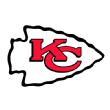
<strike></strike>
1. Alex Smith, Kansas City Chiefs
<strike></strike>
QB EPA: plus-103.6 (third)
Team EPA: minus-55.4 (21st)
QB-added value: plus-158.9
<strike></strike>When the Chiefs were 5-0 with the No. 1 offense in the league, Smith was arguably the MVP of the league. Had the defense not blown late leads to Oakland and the Jets in games in which Smith was excellent, he might have gotten a stronger push for the award. Despite the offense's brutal November, Smith finished 2017 with the highest passer rating (104.7) in the NFL to go with his first 4,000-yard season. He finished third in QB EPA behind only Brady and Carson Wentz, but is first here mainly because of how far the defense (ranked 25th) fell after losing Eric Berry in Week 1. If the Chiefs continue to play defense like they did last year, then success won't be tied to switching from Smith to Patrick Mahomes. Things have to get better on defense first.
<offer style="box-sizing: border-box;"></offer>
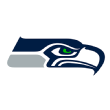
2. Russell Wilson, Seattle SeahawksTeam EPA: minus-55.4 (21st)
QB-added value: plus-158.9
<strike></strike>When the Chiefs were 5-0 with the No. 1 offense in the league, Smith was arguably the MVP of the league. Had the defense not blown late leads to Oakland and the Jets in games in which Smith was excellent, he might have gotten a stronger push for the award. Despite the offense's brutal November, Smith finished 2017 with the highest passer rating (104.7) in the NFL to go with his first 4,000-yard season. He finished third in QB EPA behind only Brady and Carson Wentz, but is first here mainly because of how far the defense (ranked 25th) fell after losing Eric Berry in Week 1. If the Chiefs continue to play defense like they did last year, then success won't be tied to switching from Smith to Patrick Mahomes. Things have to get better on defense first.
<offer style="box-sizing: border-box;"></offer>

QB EPA: plus-68.5 (ninth)
Team EPA: minus-66.1 (22nd)
QB-added value: plus-134.6
Like Smith, Wilson was a dark horse candidate for MVP last season, finishing first in touchdown passes (34). He set an NFL record with 19 fourth-quarter touchdown passes in a season and led his team in rushing with 586 yards. Wilson may have had the most valuable quarterback effort of 2017 when he threw for 452 yards in a 41-38 win over Houston. Seattle's ground game that day produced 3 yards on 17 carries. It's no surprise that Wilson had the second-worst EPA support from his offense (minus-64.9) last year due to no running game, but the Seahawks also had the worst penalty EPA (minus-32.8) of any team studied.
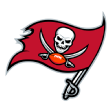
3. Jameis Winston, Tampa Bay BuccaneersTeam EPA: minus-66.1 (22nd)
QB-added value: plus-134.6
Like Smith, Wilson was a dark horse candidate for MVP last season, finishing first in touchdown passes (34). He set an NFL record with 19 fourth-quarter touchdown passes in a season and led his team in rushing with 586 yards. Wilson may have had the most valuable quarterback effort of 2017 when he threw for 452 yards in a 41-38 win over Houston. Seattle's ground game that day produced 3 yards on 17 carries. It's no surprise that Wilson had the second-worst EPA support from his offense (minus-64.9) last year due to no running game, but the Seahawks also had the worst penalty EPA (minus-32.8) of any team studied.

QB EPA: plus-38.4 (13th)
Team EPA: minus-87.9 (24th)
QB-added value: plus-126.4
Winston's third season was not great, but he still finished 13th in EPA despite missing three games to injury. The bigger problems in Tampa Bay were a poor running game, as Doug Martin failed to crack 3.0 yards per carry for the second year in a row, and the defense finished 32nd in DVOA. Out of the 28 quarterbacks/teams studied, Winston and Cleveland's DeShone Kizer were the only two who had a defense (26th) and special teams (21st) both ranked 20th or worse in EPA last season.
<strike></strike>

<strike></strike>
<strike></strike>QB EPA: plus-30.1 (14th)
Team EPA: minus-89.7 (25th)
QB-added value: plus-119.9
Few would have expected the Jets to name McCown as their team MVP in 2017, but by the numbers, he had a strong case. McCown finished 14th in EPA, which was higher than the Jets' non-QB EPA (25th), defense (20th), special teams (16th) and value in penalties (26th). McCown not only had respectable passing numbers, but he rushed for five touchdowns at age 38. This will be Sam Darnold's team any day now, but McCown turned in a quality season when it was least expected of him.

5. Tyrod Taylor, Buffalo BillsTeam EPA: minus-87.9 (24th)
QB-added value: plus-126.4
Winston's third season was not great, but he still finished 13th in EPA despite missing three games to injury. The bigger problems in Tampa Bay were a poor running game, as Doug Martin failed to crack 3.0 yards per carry for the second year in a row, and the defense finished 32nd in DVOA. Out of the 28 quarterbacks/teams studied, Winston and Cleveland's DeShone Kizer were the only two who had a defense (26th) and special teams (21st) both ranked 20th or worse in EPA last season.
<strike></strike>

<strike></strike>
4.
Josh McCown,
New York Jets<strike></strike>QB EPA: plus-30.1 (14th)
Team EPA: minus-89.7 (25th)
QB-added value: plus-119.9
Few would have expected the Jets to name McCown as their team MVP in 2017, but by the numbers, he had a strong case. McCown finished 14th in EPA, which was higher than the Jets' non-QB EPA (25th), defense (20th), special teams (16th) and value in penalties (26th). McCown not only had respectable passing numbers, but he rushed for five touchdowns at age 38. This will be Sam Darnold's team any day now, but McCown turned in a quality season when it was least expected of him.

<alsosee style='background-color: transparent; box-sizing: border-box; color: rgb(0, 0, 0); font-family: Georgia,"Times New Roman",Times,serif; font-size: 16px; font-style: normal; font-variant: normal; font-weight: 400; letter-spacing: normal; orphans: 2; text-align: left; text-decoration: none; text-indent: 0px; text-transform: none; -webkit-text-stroke-width: 0px; white-space: normal; word-spacing: 0px;'>QB EPA: plus-22.1 (16th)
Team EPA: minus-92.1 (26th)
QB-added value: plus-114.3
Since we used data in games the quarterback played, the non-QB EPA for Taylor includes the five-interception atrocity that Nathan Peterman had against the Los Angeles Chargers when he started in Taylor's place. Taylor got into that game after it was out of reach, but that is a big reason why he had the worst help from his 2017 offense in EPA (minus-67.4). (In 2016, by comparison, Taylor had the most EPA help from his offense.) Taylor also didn't get much help from a defense that ranked 18th in EPA and middling special teams (ranked 14th). An imperfect playoff system got Buffalo into the playoffs more than Taylor's individual play did, but he leaves behind a team that had a lot of flaws last year despite a 9-7 record.
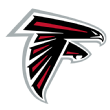
QB EPA: plus-77.1 (seventh)
Team EPA: minus-27.8 (15th)
QB-added value: plus-105.0
Ryan's numbers were down from his 2016 MVP season, but he still finished seventh in EPA. The team around him was nothing to write home about, ranking 17th in defensive EPA and 19th in special-teams EPA. The running game also took a step back in Steve Sarkisian's first year as offensive coordinator, falling from second in EPA to 12th. Ryan still had the Falcons in the playoffs again, coming up short (again) to a Philadelphia team that went on to win the Super Bowl.
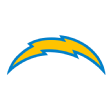
QB EPA: plus-97.0 (fourth)
Team EPA: minus-3.1 (13th)
QB-added value: plus-100.2
Rivers quietly finished second in the NFL with 4,515 passing yards. Perhaps the lack of postseasons is what makes recent accomplishments so quiet, but it would be nice if we could see Rivers with a healthy roster again. A better kicker -- the team ranked 26th in special-teams EPA -- sure would have helped too last season when a couple of missed kicks early in the season might have sealed the Chargers' playoff fate. We won't see Jason Verrett and Hunter Henry suit up this season after sustaining injuries, but Rivers has been a rock with 201 consecutive starts (including playoffs).
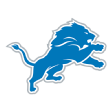
QB EPA: plus-55.2 (11th)
Team EPA: minus-32.7 (17th)
QB-added value: plus-88.0
It is well-known that Detroit hasn't had much of a running game since Barry Sanders retired after the 1998 season. Last year, the Lions finished last in rushing yards (1,221) and yards per carry (3.4), so it's no surprise to see Stafford finish with the third-worst EPA from his non-QB teammates. At least the defense (ranked 13th) and special teams (seventh) were more respectable last year and might improve now that Matt Patricia has taken over as coach.

QB EPA: plus-95.6 (fifth)
Team EPA: plus-22.3 (10th)
QB-added value: plus-73.4
Brees would often rank No. 1 in QB-added value, like he did in 2016, but the Saints provided him help last year in a return to the playoffs. The non-QB EPA was the second highest, led by rookie running back Alvin Kamara's incredible efficiency (6.1 yards per carry). The defense, which has usually ranked at the bottom of the league, was respectable at 14th, and the special teams also finished above average at 13th. If you were concerned that Brees might have started declining at age 38, he still finished fifth in QB EPA.

QB EPA: plus-105.0 (second)
Team EPA: plus-45.9 (27th)
QB-added value: plus-59.0
Wentz had a good chance to top Brady (120.0) in EPA among quarterbacks, but he tore his ACL in Week 14 and missed the final three games. The Eagles proved they still had a great team behind him with good rankings all around for non-QB EPA (eighth), defense (seventh) and special teams (12th). Still, last year was a huge step forward for Wentz, who finished his rookie season with plus-19.6 EPA (ranked 20th).

</alsosee>
<strike></strike>

1. Joe Flacco, Baltimore Ravens
QB EPA: minus-40.0 (26th)
Team EPA: plus-140.9 (first)
QB-added value: minus-180.9
Not only is Flacco a two-time highest-paid player in NFL history, but he's also a two-time least valuable quarterback in the NFL. In 2016, the Ravens had the second-highest team EPA while Flacco was 49.4 points below that. In 2017, the Ravens had the highest team EPA while Flacco was even worse, creating a staggering difference of 180.9 EPA. Baltimore had the No. 4 rushing attack, No. 4 defense, No. 5 special teams and was No. 8 in penalties, but the Ravens also had a bottom-three quarterback. It's no surprise they now have Lamar Jackson on the roster.

2. Trevor Siemian, Denver BroncosTeam EPA: plus-140.9 (first)
QB-added value: minus-180.9
Not only is Flacco a two-time highest-paid player in NFL history, but he's also a two-time least valuable quarterback in the NFL. In 2016, the Ravens had the second-highest team EPA while Flacco was 49.4 points below that. In 2017, the Ravens had the highest team EPA while Flacco was even worse, creating a staggering difference of 180.9 EPA. Baltimore had the No. 4 rushing attack, No. 4 defense, No. 5 special teams and was No. 8 in penalties, but the Ravens also had a bottom-three quarterback. It's no surprise they now have Lamar Jackson on the roster.

QB EPA: minus-46.6 (27th)
Team EPA: plus-39.2 (seventh)
QB-added value: minus-85.8
In his first season as a starter (2016), Siemian was the third-least valuable quarterback, but that had more to do with Denver's No. 1 defense outpacing his mediocrity as a passer. In 2017, everything in Denver regressed with Siemian's turnovers and the worst special teams by EPA combining to put the defense (still third in EPA) in terrible field position. That led to the Broncos ranking 14th in points per drive, but they allowed the second-fewest yards per drive in 2017. The Broncos had to make a move to Case Keenum because Siemian was never going to be the long-term answer.

3. Jared Goff, Los Angeles RamsTeam EPA: plus-39.2 (seventh)
QB-added value: minus-85.8
In his first season as a starter (2016), Siemian was the third-least valuable quarterback, but that had more to do with Denver's No. 1 defense outpacing his mediocrity as a passer. In 2017, everything in Denver regressed with Siemian's turnovers and the worst special teams by EPA combining to put the defense (still third in EPA) in terrible field position. That led to the Broncos ranking 14th in points per drive, but they allowed the second-fewest yards per drive in 2017. The Broncos had to make a move to Case Keenum because Siemian was never going to be the long-term answer.

QB EPA: plus-63.0 (10th)
Team EPA: plus-114.8 (second)
QB-added value: minus-51.7
Last season, we had Case Keenum as the second-least valuable quarterback, and Goff would have been the worst (minus-71.9 EPA) if he had more than seven starts. So the top three teams with least valuable quarterbacks remain the same from 2016 (Ravens, Broncos, Rams), but the Rams are here this time because of how good the team played under Sean McVay last year. Todd Gurley was the MVP runner-up as the non-QB EPA ranked sixth. Wade Phillips' defense was sixth in EPA. Goff enjoyed the best special teams in the league, which helped with field position, where the Rams had the second-best average starting position. Goff improved to 10th in EPA, but it cannot be overlooked that he had more help than anyone not named Flacco in 2017. The Rams loaded up this offseason, so he could be in for a similar ranking next year.

4. Blake Bortles, Jacksonville JaguarsTeam EPA: plus-114.8 (second)
QB-added value: minus-51.7
Last season, we had Case Keenum as the second-least valuable quarterback, and Goff would have been the worst (minus-71.9 EPA) if he had more than seven starts. So the top three teams with least valuable quarterbacks remain the same from 2016 (Ravens, Broncos, Rams), but the Rams are here this time because of how good the team played under Sean McVay last year. Todd Gurley was the MVP runner-up as the non-QB EPA ranked sixth. Wade Phillips' defense was sixth in EPA. Goff enjoyed the best special teams in the league, which helped with field position, where the Rams had the second-best average starting position. Goff improved to 10th in EPA, but it cannot be overlooked that he had more help than anyone not named Flacco in 2017. The Rams loaded up this offseason, so he could be in for a similar ranking next year.

QB EPA: plus-53.6 (12th)
Team EPA: plus-99.6 (third)
QB-added value: minus-46.1
It should come as no surprise that Bortles had the most help from his stellar defense (140.2 EPA) of any 2017 quarterback. The special teams were not strong from the Jaguars, ranked 24th in EPA, which led to the team ranking behind the Ravens and Rams in EPA. It's hard to say if we'll see the best of Bortles moving forward after getting a taste of the postseason, but pairing a No. 12 quarterback in EPA with a top defense is a formula to get far in the playoffs as Jacksonville did a year ago. It just should not be as easy in the division this year with Andrew Luck and Deshaun Watson back.

5. Mitchell Trubisky, Chicago BearsTeam EPA: plus-99.6 (third)
QB-added value: minus-46.1
It should come as no surprise that Bortles had the most help from his stellar defense (140.2 EPA) of any 2017 quarterback. The special teams were not strong from the Jaguars, ranked 24th in EPA, which led to the team ranking behind the Ravens and Rams in EPA. It's hard to say if we'll see the best of Bortles moving forward after getting a taste of the postseason, but pairing a No. 12 quarterback in EPA with a top defense is a formula to get far in the playoffs as Jacksonville did a year ago. It just should not be as easy in the division this year with Andrew Luck and Deshaun Watson back.

QB EPA: minus-31.6 (22nd)
Team EPA: plus-12.4 (11th)
QB-added value: minus-44.0
The passing offense was limited in Trubisky's rookie season. Chicago had a top-10 running game (led by Jordan Howard) and a defense that finished fifth in EPA in this study, but not enough points were coming out of the passing game. That's where rookie head coach Matt Nagy is expected to have a big impact, but he has a lot of new pieces to work in with his second-year quarterback.
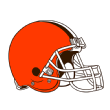
6. DeShone Kizer, Cleveland BrownsTeam EPA: plus-12.4 (11th)
QB-added value: minus-44.0
The passing offense was limited in Trubisky's rookie season. Chicago had a top-10 running game (led by Jordan Howard) and a defense that finished fifth in EPA in this study, but not enough points were coming out of the passing game. That's where rookie head coach Matt Nagy is expected to have a big impact, but he has a lot of new pieces to work in with his second-year quarterback.

QB EPA: minus-89.5 (28th)
Team EPA: minus-81.1 (23rd)
QB-added value: minus-8.4
Playing on an 0-16 team likely meant little help for the quarterback, which was true in Kizer's case, the quarterback for 15 of those losses, who was traded to Green Bay this offseason. Cleveland's EPA for defense (24th), special teams (22nd) and penalties (22nd) was poor, but the running game was a respectable seventh. It's just that there isn't much running to be done when your team is so often trailing by large deficits. Kizer's 22 interceptions and nine fumbles also helped make him the least valuable quarterback in 2017. The Browns gave him a shot for one year, but Baker Mayfield should give Cleveland a much brighter future.

7. Andy Dalton, Cincinnati BengalsTeam EPA: minus-81.1 (23rd)
QB-added value: minus-8.4
Playing on an 0-16 team likely meant little help for the quarterback, which was true in Kizer's case, the quarterback for 15 of those losses, who was traded to Green Bay this offseason. Cleveland's EPA for defense (24th), special teams (22nd) and penalties (22nd) was poor, but the running game was a respectable seventh. It's just that there isn't much running to be done when your team is so often trailing by large deficits. Kizer's 22 interceptions and nine fumbles also helped make him the least valuable quarterback in 2017. The Browns gave him a shot for one year, but Baker Mayfield should give Cleveland a much brighter future.

QB EPA: minus-35.7 (23rd)
Team EPA: minus-31.5 (16th)
QB-added value: minus-4.2
After making the playoffs in each of his first five seasons, Dalton spent a second January in a row at home with the rest of the Bengals. Dalton individually got off to a horrible start in 2017 when the Bengals scored nine points in two games and fired their offensive coordinator. Things improved for him, but the rest of the team was still pretty mediocre, finishing 16th in non-QB EPA, 15th in defensive EPA and 15th in special-teams EPA.

8. Cam Newton, Carolina PanthersTeam EPA: minus-31.5 (16th)
QB-added value: minus-4.2
After making the playoffs in each of his first five seasons, Dalton spent a second January in a row at home with the rest of the Bengals. Dalton individually got off to a horrible start in 2017 when the Bengals scored nine points in two games and fired their offensive coordinator. Things improved for him, but the rest of the team was still pretty mediocre, finishing 16th in non-QB EPA, 15th in defensive EPA and 15th in special-teams EPA.

QB EPA: plus-28.2 (15th)
Team EPA: plus-26.8 (ninth)
QB-added value: plus-1.3
Carolina returned to the playoffs in 2017, but Newton finished 15th in EPA after an inconsistent season that saw some of his best games (at New England and Detroit) mixed with some of his worst (Chicago and the first New Orleans matchup). Carolina's best unit was again the defense, which ranked 10th in EPA. The Panthers were also 11th in special teams and had the second-biggest boost in EPA from penalties (plus-19.4) of any team in 2017.

9. Dak Prescott, Dallas CowboysTeam EPA: plus-26.8 (ninth)
QB-added value: plus-1.3
Carolina returned to the playoffs in 2017, but Newton finished 15th in EPA after an inconsistent season that saw some of his best games (at New England and Detroit) mixed with some of his worst (Chicago and the first New Orleans matchup). Carolina's best unit was again the defense, which ranked 10th in EPA. The Panthers were also 11th in special teams and had the second-biggest boost in EPA from penalties (plus-19.4) of any team in 2017.

QB EPA: plus-11.6 (17th)
Team EPA: plus-1.6 (12th)
QB-added value: plus-10.0
As a 2016 rookie, Prescott finished third in QB EPA while his team was only 15th. Last year, the passing game declined more than anything in Dallas, and Prescott finished 17th in EPA while the team improved to 12th. Prescott had more rushing EPA (plus-32.0) than any quarterback, which made up for a real down year in passing (minus-20.5 EPA). Dallas still had a strong running game despite Ezekiel Elliott's six-game suspension (third in EPA), but ranked only 22nd on defense. Dallas can get back to the playoffs in 2018 if Prescott can get back to his rookie success, because this team still won nine games last year despite a terrible three-game stretch in November.
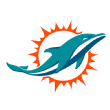
10. Jay Cutler, Miami DolphinsTeam EPA: plus-1.6 (12th)
QB-added value: plus-10.0
As a 2016 rookie, Prescott finished third in QB EPA while his team was only 15th. Last year, the passing game declined more than anything in Dallas, and Prescott finished 17th in EPA while the team improved to 12th. Prescott had more rushing EPA (plus-32.0) than any quarterback, which made up for a real down year in passing (minus-20.5 EPA). Dallas still had a strong running game despite Ezekiel Elliott's six-game suspension (third in EPA), but ranked only 22nd on defense. Dallas can get back to the playoffs in 2018 if Prescott can get back to his rookie success, because this team still won nine games last year despite a terrible three-game stretch in November.

QB EPA: minus-25.9 (21st)
Team EPA: minus-39.8 (18th)
QB-added value: plus-13.9
One of the nicest things we can say about Cutler's 2017 season is that at least he didn't play in the game where Baltimore destroyed Miami 40-0 in prime time, and he was crucial in the upset win over New England in Week 14. Overall, Cutler's EPA was higher than the rest of the team's, which might not speak well about what the Dolphins have around Ryan Tannehill when he returns this season. At least the special teams were good, finishing eighth in EPA.

<mark style="box-sizing: border-box;">Most aggressive</mark>Team EPA: minus-39.8 (18th)
QB-added value: plus-13.9
One of the nicest things we can say about Cutler's 2017 season is that at least he didn't play in the game where Baltimore destroyed Miami 40-0 in prime time, and he was crucial in the upset win over New England in Week 14. Overall, Cutler's EPA was higher than the rest of the team's, which might not speak well about what the Dolphins have around Ryan Tannehill when he returns this season. At least the special teams were good, finishing eighth in EPA.

<strike></strike>
<strike></strike><strike></strike><strike></strike><strike></strike><strike></strike><strike></strike><strike></strike><strike></strike><strike></strike>It's third-and-12 and your favorite team's quarterback just threw a 4-yard pass, bringing out the punt team.
<strike></strike>
Isn't that frustrating to watch? Wouldn't it be great to have a stat that measures which quarterbacks do this the most and to what degree? This is why Air Less Expected, or ALEX for short, was created at Football Outsiders.
Inspired by conservative passer Alex Smith, ALEX measures the average difference between how far a quarterback threw a pass (air yards) and how many yards he needed for a first down. If a quarterback throws a 3-yard pass on third-and-10, then that would be minus-7 ALEX. The best application of ALEX is to look at third down, when it's really crucial to get 100 percent of the needed yards to extend the drive.
For the rankings, 38 quarterbacks with at least 50 third-down passes qualified.
Inspired by conservative passer Alex Smith, ALEX measures the average difference between how far a quarterback threw a pass (air yards) and how many yards he needed for a first down. If a quarterback throws a 3-yard pass on third-and-10, then that would be minus-7 ALEX. The best application of ALEX is to look at third down, when it's really crucial to get 100 percent of the needed yards to extend the drive.
For the rankings, 38 quarterbacks with at least 50 third-down passes qualified.
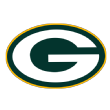
2017 ALEX: Plus-4.0Rodgers is as consistently aggressive on third down as anyone in the NFL. He has ranked in the top six in ALEX every season since 2008. However, not everything was rosy in 2017, even before the collarbone injury that shortened his season. Rodgers actually had the NFL's lowest completion percentage (51.0 percent) and second-highest sack rate (13.8 percent) on third down last year. He still finished sixth in conversion rate, thanks to attacking the sticks more than anyone. Only a league-low 21.6 percent of Rodgers' throws were short of the sticks. No matter what changes in Green Bay, you can expect Rodgers to keep this mindset on third down.
 2. Carson Wentz, Philadelphia Eagles
2. Carson Wentz, Philadelphia Eagles
2017 ALEX: Plus-3.3
In his rookie season, Carson Wentz was only plus-0.2 in ALEX, but he took a much more aggressive approach in 2017. Wentz threw the deepest third-down passes in the league, at 10.9 air yards per attempt. He connected a lot, too, with the second-highest conversion rate in 2017. While Alshon Jeffery and Torrey Smith helped Wentz raise his ALEX, it was the breakout year by Nelson Agholor that really helped the offense be so successful on third down, where Wentz led the league with an 11.3 touchdown pass rate. Wentz also had the fourth-highest blitz rate (39.6 percent) on third down last year, so defenses may want to back off a little more this season, even though testing that repaired knee in September could be enticing to defensive coordinators.

2017 ALEX: Plus-2.9
Winston joins Wentz and Rodgers as the only quarterbacks to throw their average third-down pass more than 10 yards down the field last year. This has been a fairly consistent part of Winston's three-year career in Tampa Bay. He finished fifth in ALEX in 2016 (plus-3.0). The addition of DeSean Jackson did not really help the offense last season (plus-11.4 ALEX, but a 25 percent conversion rate), but Winston still has a deep receiving corps to work with.

2017 ALEX: Plus-2.5
Brady's ALEX was at its highest since 2009, his last full season with Randy Moss. On average, he held the ball longer in the pocket (2.49 seconds) on third down than any quarterback. We expected some of this with Brandin Cooks serving as the No. 1 wide receiver, but Brady's ALEX on third-down targets to Cooks was a staggering plus-11.2. However, that didn't work out so well (27 percent conversion rate) and Cooks was traded to the Rams. Julian Edelman is facing a four-game suspension to start 2018, and Danny Amendola and Dion Lewis are gone. The 41-year-old quarterback still has All-Pro tight end Rob Gronkowski, and Bill Belichick always finds a way to adjust, but we would expect Brady to dial things back a little this season.

2017 ALEX: Plus-2.4
When he's not running through defenders, Newton loves the deep ball as much as any quarterback right now. This was the fourth time he has finished in the top five in ALEX in his seven seasons. The problem is he has never ranked higher than 14th in a season in conversion rate, and he finished 23rd in 2017. Carolina's receiving corps is arguably the deepest it ever has been for Newton after adding DJ Moore, Torrey Smith and Jarius Wright.

2017 ALEX: Plus-2.4
The closest quarterback who compares to Rodgers in ALEX is Roethlisberger, who finished in the top six for the seventh time since 2006. Like Rodgers, Roethlisberger will take too many sacks at times in an effort to extend the drive, but he has improved in that area and had the third-lowest sack rate (4.7 percent) on third down last year. When Roethlisberger gets the throw off on third down, he usually will attack beyond the sticks -- and with great success. Since 2001, Roethlisberger has the league's best conversion rate on third-down throws (46.6 percent), according to ESPN Stats & Info.

2017 ALEX: Plus-2.3
Houston's passing offense under Bill O'Brien has been allergic to YAC for years, and it was no exception last year when Savage had to start for an injured Deshaun Watson. It makes sense to try throwing contested catches to DeAndre Hopkins given his skill set, but the passes from Savage were rarely good enough. Watson had a similar ALEX at plus-2.1 and expects to be one of the more aggressive passers when he returns for a healthy 2018.
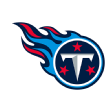
2017 ALEX: Plus-2.2
Mariota finished No. 8 in ALEX in 2016, but he saw his conversion rate drop from eighth to 28th during a difficult third season in Tennessee. Mariota tried pushing the ball to all of his wide receivers, but rookie Corey Davis and aging tight end Delanie Walker had poor conversion rates. The Titans also used DeMarco Murray too often on third downs, despite a success rate of just 39 percent. Fortunately, that is an area where recent arrival Dion Lewis could help as a talented receiving back, but Mariota has to make big strides under new coach Mike Vrabel.

2017 ALEX: Plus-2.2
Hundley tried his best to copy Rodgers' aggressive approach on third down, but he unsurprisingly was not as consistent with making the throws. Hundley's conversion rate was 31.0 percent, the second lowest on third down in 2017, and he also had the fifth-highest sack rate (12.7 percent). To his credit, Hundley had 8.0 percent of his third-down throws dropped, surpassed only by Eli Manning (8.9 percent), according to ESPN Stats & Info.

2017 ALEX: Plus-2.1
Dalton routinely ranks in the top half of the league in ALEX. It's his inconsistencies with accuracy and decision-making that usually prevent the Bengals from being a strong third-down passing offense. For example, Dalton stayed in the pocket on third down for an average of only 2.15 seconds last year, the lowest time in the league, according to ESPN Stats & Info. However, he still had a sack rate of 13.3 percent, the third-worst rate in 2017. Even though he's a seven-year starter, Dalton still struggles with knowing when to get rid of the ball quickly versus holding the ball longer to make a play.

<strike></strike>

1. Mitchell Trubisky, Chicago Bears
2017 ALEX: Minus-2.4
Before we blame conservative coach John Fox for Mitchell Trubisky having the lowest ALEX as a rookie, let's recall that 2016's most aggressive passer was Chicago's Matt Barkley. To his credit, Trubisky was stuck in a limited offense and faced the toughest third-down situations, with an average of 8.8 yards needed for a first down. Still, he was far too timid on those plays, relying heavily on YAC while also taking the highest sack rate (14.4 percent) on third down in 2017. This is something Matt Nagy will have to fix, but even in Alex Smith's best season last year in Kansas City, his ALEX was still only plus-0.7 (ranked 22nd).

2017 ALEX: Minus-1.9
Osweiler's return to Denver did not go well. He has gotten increasingly more conservative since 2015 and bottomed out last year when he threw 59.6 percent of his third-down passes short of the sticks, the highest rate in the league. Osweiler is in Miami this year to replace the next quarterback on the list.

2017 ALEX: Minus-0.5
Cutler put off retirement for one more year to perform an important task: deliver 3-yard passes on third-and-14 to Jarvis Landry. That play really happened in Miami's season opener, but for the season, Cutler to Landry finished 0-for-10 on third down when at least 10 yards were needed. That's not all Landry's fault, because Cutler had the worst third-down conversion rate among all quarterbacks last year. The only Miami player who converted over 40 percent of the time on passes caught was running back Damien Williams on seven targets. Cutler was never a minus-ALEX passer in Denver or Chicago, so his swan song felt fittingly carefree.

2017 ALEX: Minus-0.3
Hoyer hasn't played for the same team in consecutive seasons since his time in Cleveland (2013-14), so he has been hard to analyze with pieces constantly changing around him. In San Francisco, he just was not aggressive enough, so Kyle Shanahan will be happy to have the only quarterback (Jimmy Garoppolo) with a conversion rate above 50 percent on third-down passes last year instead of the one with the third-lowest rate in Hoyer.

2017 ALEX: Minus-0.2
Brees has a reputation for throwing a pretty deep ball, but he has also loved the short throw to his running back. It used to be Reggie Bush, Darren Sproles and Pierre Thomas, but now it's the electrifying Alvin Kamara. That affinity for receiving backs is why Brees has ranked all over the map in ALEX since 2006, but 2017 was the first time he ever had a negative number with the Saints. The offense obviously still worked, but Brees' third-down conversion rate ranked 14th in the league, the first time he didn't rank in the top eight since 2006.
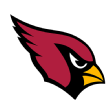
2017 ALEX: Minus-0.1
Arizona had the misfortune of being Gabbert's third NFL team. In the five seasons he has qualified for ALEX, his rankings have been 30th, 36th, 37th, 32nd and 33rd. The minus-0.1 ALEX last year is actually his highest mark yet in a season, but Gabbert has always been terrible at locating the sticks and throwing at or beyond them. If we wanted to change the stat's name to BLAINE, it would stand for "Beyond Line Attempt Is Not Expected."

2017 ALEX: Plus-0.1
As a rookie, Goff was the least aggressive passer in the league with minus-2.5 ALEX, which is right in the Blaine Gabbert Danger Zone. He improved this number under Sean McVay, but the Rams still ran a YAC-heavy offense. In fact, Goff now has the most unlikely third-down conversion in our database (since 2006) after a bubble screen to Robert Woods against the Giants on third-and-33 broke for a 52-yard touchdown. That's minus-34 ALEX for Goff, breaking the previous long conversion of minus-27 ALEX (done a few times before). Even if we removed this play, Goff still would have ranked 27th in ALEX (plus-0.3) instead of 32nd (plus-0.1).

2017 ALEX: Plus-0.1
Keenum has been inconsistent with ALEX, which is not surprising from someone who has changed teams multiple times. Keenum was close to neutral (0.0) for the second year in a row, but he had much more success, including a career-best conversion rate (46 percent), in a great offense with the Vikings. Now he'll try repeating his success with the Broncos, a team that's not as deep at receiver.

2017 ALEX: Plus-0.1
McCown had an unexpectedly solid season of throwing to his wideouts (Robby Anderson and Jermaine Kearse), but too often the Jets relied on running backs to create yards after the catch on third down. McCown's third-down ALEX to running backs was minus-6.7, and those plays only converted 36 percent of the time (17 percent with returning backs Bilal Powell and Elijah McGuire). When targeting wide receivers, McCown's ALEX was plus-3.4, and 49 percent of those plays extended a drive.
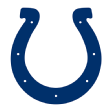
2017 ALEX: Plus-0.2
Andrew Luck is annually one of the most aggressive quarterbacks in the NFL, but Brissett took a different approach last year in his place. There were rare moments of brilliance when Brissett, under pressure, found T.Y. Hilton (plus-3.5 ALEX) down the field for big plays. But too often there were quick-hitting throws to tight end Jack Doyle (minus-1.3 ALEX) that just didn't move the chains enough for the Colts. Brissett also faded after halftime, converting 31 percent of his third-down throws in the second half compared to 47 percent in the first half.

<strike></strike>In 2017, Brees became the first quarterback to complete 72 percent of his passes in a season. It was the third time Brees broke the NFL's single-season record for completion percentage. With his record-breaking performances coming in an era when the short throw is king, we need a better way of quantifying completion percentage, which is often used synonymously with accuracy.
Football Outsiders has used game-charting data to create a stat called passing plus-minus, which estimates how many passes a quarterback completed compared to what an average quarterback would have completed based on each throw's distance, the yards needed for a first down, and which side of the field the pass was thrown to.
This is turned into a rate stat, denoted as C%+, that shows how many percentage points better than average the quarterback was at completing passes. Here are the 10 most accurate QBs from the 2017 season by C%+.

1. Drew Brees, New Orleans SaintsFootball Outsiders has used game-charting data to create a stat called passing plus-minus, which estimates how many passes a quarterback completed compared to what an average quarterback would have completed based on each throw's distance, the yards needed for a first down, and which side of the field the pass was thrown to.
This is turned into a rate stat, denoted as C%+, that shows how many percentage points better than average the quarterback was at completing passes. Here are the 10 most accurate QBs from the 2017 season by C%+.

C%+: 7.6 percentBrees now has four of the top eight seasons in C%+ since 2006. According to ESPN Stats & Info, Brees was off-target on only 11.1 percent of his passes, the third-best season since 2009. Brees also has the top two seasons (9.9 percent in 2016 and 10.9 percent in 2014). While Brees did throw much shorter passes in 2017, he was still by far the leader in C%+ (a blistering plus-14.3 percent) on throws that traveled more than 10 yards beyond the line of scrimmage. You know you're doing something right when you help Ted Ginn Jr. to the best C%+ in the league.

2. Case Keenum, Minnesota Vikings
C%+: 5.1 percentKeenum had one of the most surprising breakout seasons in NFL history at quarterback. Prior to 2017, Keenum's C%+ was minus-3.9 percent, one of the worst rates since 2006. Yet he finished 2017 as No. 1 in passing DVOA, No. 1 in QBR under pressure and No. 2 in C%+. Keenum was wildly successful in throwing to Minnesota's two great wideouts in Stefon Diggs and Adam Thielen (plus-6.1 percent C%+). The duo in Denver (Demaryius Thomas and Emmanuel Sanders) is not quite as good right now, but they should be serviceable for Keenum to try repeating this success. Skepticism is warranted.

3. Jameis Winston, Tampa Bay Buccaneers
C%+: 4.5 percentWinston actually set a lot of career-highs in passing in 2017. One of the main reasons his C%+ was so high is that he threw the deepest passes in the league, at an average depth of 10.3 yards. He also was efficient with almost every player he targeted, save for departed running back Doug Martin (minus-20.7 percent C%+) and deep threat DeSean Jackson (minus-0.1 percent C%+). With O.J. Howard and Chris Godwin entering their second seasons, Winston could be poised for even better numbers once he returns from serving a three-game suspension.

4. Josh McCown, New York Jets
C%+: 4.5 percentRemember when the Jets were going to go 0-16 and struggle to score? McCown had arguably the best season of his journeyman career at age 38. There were six players whom McCown threw at least 25 passes to, and he had a positive C%+ with all six of them. McCown may be the least likely player in the top 10 to start again in 2018, but his 2017 effort was more than respectable given what he had to work with.

5. Alex Smith, Kansas City Chiefs
C%+: 4.1 percentSmith's final year in Kansas City was arguably his best yet in the NFL. He threw for 4,000 yards for the first time in Year 13 of his career. While Smith was a little more aggressive, it was the efficiency he displayed on throws down the field that was most uncharacteristic for his career. Smith's C%+ on passes thrown more than 10 yards beyond the line of scrimmage was plus-7.2 percent, trailing only Brees. Smith will look to continue his success in Washington this year.

6. Tom Brady, New England Patriots
C%+: 3.6 percentBrady actually posted very similar numbers to his 2016 season, except in one area where things changed drastically. In 2016, Brady was off-target on 45.2 percent of his passes when pressured, the only quarterback in the NFL above 40 percent that year. In 2017, Brady was off-target on 20.9 percent of his passes when pressured, the lowest rate in the NFL. Brady's 54.0 QBR under pressure was the second-highest mark in 2017.

7. Aaron Rodgers, Green Bay Packers
C%+: 2.8 percentRodgers actually hasn't had a season in C%+ above plus-4.0 percent since 2013, and his 2017 campaign was cut short by another collarbone injury. He should be healthy again, but if there was a concern last season, it was that Rodgers had the highest rate of off-target passes (26.5 percent) in the league on third down, according to ESPN Stats & Info. He had the second-lowest rate of off-target passes on first down (8.6 percent) but was also the least aggressive first-down passer in 2017, averaging just 4.9 air yards per attempt.

8. Matt Ryan, Atlanta Falcons
C%+: 2.7 percentRyan certainly slipped from his MVP season of 2016 when he led the league with plus-6.6 percent C%+. However, 2017 was more in the range of a typical Ryan season, which still puts him in the top eight in the league. Ryan also had to deal with more tipped interceptions than any quarterback since 2010. The hope in 2018 is for better luck in the turnover department and a stronger second year from offensive coordinator Steve Sarkisian.

9. Ben Roethlisberger, Pittsburgh Steelers
C%+: 2.3 percentRoethlisberger bounced back from a down year in 2016 when his C%+ was negative (minus-1.3 percent) for the first time since 2008. He still wasn't up to the level he was in 2014 and 2015 when the deep balls were connecting better, but he finished 2017 strong. Roethlisberger's C%+ was plus-4.5 percent following the Week 5 horror show against Jacksonville.

10. Matthew Stafford, Detroit Lions
C%+: 2.2 percentSomewhat quietly, Stafford averaged a career-high 7.9 yards per pass attempt last season. He has great chemistry with his top two wideouts (plus-5.4 percent C%+ to Marvin Jones and Golden Tate), but the numbers could even get better this season after tight end Eric Ebron left for Indianapolis. Ebron had one of Stafford's lowest C%+ ratings at minus-2.2 percent last season.

<mark style="box-sizing: border-box;">Least accurate</mark>
<strike></strike>

1. Brian Hoyer, San Francisco 49ers
C%+: Minus-7.2 percent
Among the bottom 10 passers in C%+ in 2017, six are not expected to have a starting job in 2018. None lost their job with their team faster than Hoyer, who was cut in San Francisco after the Jimmy Garoppolo trade in late October. In six starts, Hoyer struggled with throwing to all position groups in Kyle Shanahan's offense, but he most notably failed to connect with the team's top four wideouts (Pierre Garcon, Marquise Goodwin, Trent Taylor and Aldrick Robinson). His C%+ was minus-9.0 percent to those four players.

C%+: Minus-6.0 percent
Is it a wonder why the 49ers were 1-10 after starting Hoyer and Beathard? Beathard struggled to stay upright when he started last season. Garoppolo did not have enough attempts to qualify for these rankings, but his C%+ was plus-4.1 percent last season, which would have ranked fifth. That's a huge upgrade from the bottom two passers in the league, despite Garoppolo working with the same system and supporting cast.

C%+: Minus-6.0 percent
Kizer was traded to Green Bay in March after a really rough, turnover-plagued rookie season with the Browns. According to ESPN Stats & Info, Kizer had the fifth-highest rate of off-target passes when pressured (35.9 percent), but also the highest rate of off-target passes even when he wasn't pressured (20.2 percent).

C%+: Minus-4.0 percent
Savage lost his starting job to Watson (1.5 percent C%+) at halftime in Week 1 last season but regained it after Watson tore his ACL. Savage never displayed good accuracy in Houston, where he had a minus-5.6 percent C%+ on targets to DeAndre Hopkins (his lowest to any player). Savage will attempt to back up Brees in New Orleans this season.

C%+: Minus-3.7 percent
Finally, here's a player still expected to have his starting job in 2018. Trubisky's rookie season did not go well, but 25 targets to Markus Wheaton and Zach Miller dropped his C%+ from minus-1.7 percent to minus-3.7 percent. Neither receiver will play a snap for the Bears this season. The Bears have upgraded their receiving corps with Allen Robinson, Taylor Gabriel, rookie Anthony Miller and tight end Trey Burton. Under Matt Nagy, Trubisky should improve his C%+ as much as any quarterback this year.

C%+: Minus-3.4 percent
Manning saw his C%+ decline for the third year in a row, though consistent accuracy has never been a strong trait of his. In fact, Manning's worst season in C%+ was in his first Super Bowl season (2007, minus-4.6 percent), and his best C%+ season was when he got his last Super Bowl win (2011, plus-2.7 percent). The persistent decline at age 37 is very worrisome, but it's hard to imagine the Giants will have as many skill players injured as they did in 2017. Manning struggled most with rookie tight end Evan Engram (minus-7.7 percent C%+) last season.

C%+: Minus-3.2 percent
Newton improved on his 2016 season where he had the worst C%+ (minus-6.1 percent) in the league, but he has never fared too well in any accuracy stat. Former receiver Kelvin Benjamin recently criticized Newton's accuracy. Ironically enough, Newton's C%+ was at its highest (plus-3.8 percent) in 2017 when targeting Benjamin (pre-Buffalo trade) and tight end Ed Dickson (departed to Seattle). It was at its lowest (minus-16.9 percent) when targeting injured tight end Greg Olsen and the departed Jonathan Stewart. Newton will try to improve under new offensive coordinator Norv Turner this season.

C%+: Minus-2.8 percent
Siemian is out in Denver after regressing in his second season as a starter. He was off-target on 43.3 percent of his passes when pressured, the highest rate in the league. When the passing offense is built so heavily around Demaryius Thomas and Emmanuel Sanders, it's very problematic when Siemian's C%+ was at its worst (minus-5.3 percent) when throwing to those two players. Siemian will compete to back up Kirk Cousins in Minnesota in 2018.

C%+: Minus-2.7 percent
<strike></strike>The great news is that Andrew Luck appears to be ready for the Colts in 2018. The good news is that backup Jacoby Brissett was better than these numbers suggest. He was really dragged down by Kamar Aiken (six drops and another play in which he tripped on the route) and running back Marlon Mack (four drops on 29 targets). Those two players produced a minus-21.0 percent C%+ for Brissett, but he was plus-0.6 percent C%+ to everyone else. Aiken is no longer with the team.
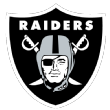
10. Derek Carr, Oakland Raiders
C%+: Minus-1.6 percentCarr has been below average in C%+ in all four of his seasons. While Seth Roberts' inefficiency was a big problem in 2016, it was the stars of the offense (Amari Cooper, Michael Crabtree and running back Marshawn Lynch) that Carr had his biggest problems with in 2017. Those three players combined to produce a C%+ of minus-7.2 percent for Carr compared to plus-2.3 percent C%+ when throwing to the rest of the team. Adding an older Jordy Nelson and an inefficient Martavis Bryant might not help matters in 2018.<strike></strike>
<strike></strike><strike></strike><strike></strike><strike></strike><strike></strike>





